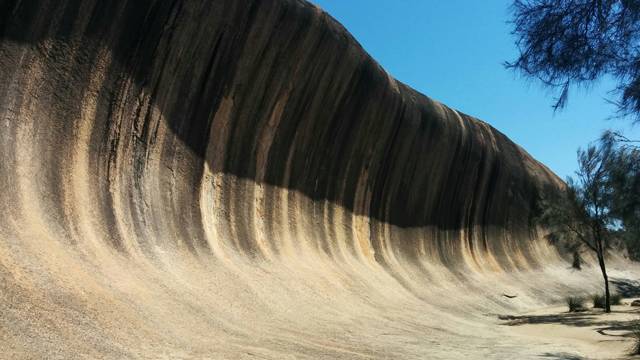WAVE ROCK – A GRANITE WAVE

It is well known that nature creates unique things and arranges for unique places. The small town of Hyden in Western Australia, for example, is famous for a natural rock formation shaped like a crashing ocean wave.

This is the north side of the lone hill Hyden Rock which is a granite spur three kilometres east of Hyden. The shape explains the name given to it: Wave Rock (stone wave). Wave Rock is 14 m high and about 110 m long. The formation is dated to 2.6 billion years ago.
In addition to its striking appearance, Wave Rock is also an interesting geomorphological example of the formation of what is called “a flared slope”. This term is described as a concave inward or upward sloping surface of bedrock, which can usually be found around the base of mogotes and granite boulders.
Open slopes, such as Wave Rock, are particularly well developed in granitic formations across Western Australia and South Australia. Open slopes are thought to have formed as a result of concentrated chemical weathering around the base of the mogote caused by groundwater.
Wave Rock, along with all of Hyden Rock, is part of the 160-hectare Hyden Wildlife Park Nature Reserve. Over 100,000 tourists visit the reserve each year. And since 2006, Wave Rock has hosted the Wave Rock Weekender music festival.
A mogote is a fragment of a hill or the remnant of a larger rock mass that has been formed by weathering and erosion. It usually occurs as an isolated form of terrain, often with steep slopes. A classic example of a mogote is Maczuga Herkulesa in Jura Krakowsko-Częstochowska.
Source: Kurier kamieniarski
Author: Kurier Kamieniarski | Published: 18.11.2020
